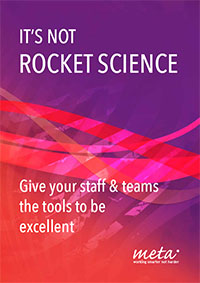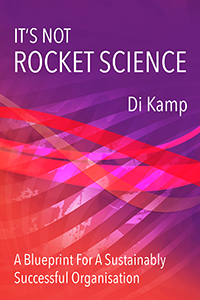When we have lots to do, never-ending tasks on our lists, it seems easier to just get on with it and stay in our own silo. But if you stop and reflect on it for a moment, you will realise that a lot of the obstacles you encounter in your work are caused by ‘them’ – the people in other teams or departments. ‘They’ don’t respond quickly enough; ‘they’ don’t understand how important something is; ‘they’ are not easy to get hold of; ‘they’ are asking for something urgently that you haven’t got on your priority list – because of course, ‘they’ are also working in their own silos!
Most of us cannot effectively do our work by staying in our silo, because the majority of projects these days involve a network of different roles in the organisation, so working cross-functionally is built in. Unfortunately the habit of working together cross-functionally isn’t.
Instead of resisting the cross-functionality, it genuinely makes our life easier if we work with it. It’s not difficult and it saves us time and energy in the longer term, if we choose to come out of our silo and work collaboratively and co-operatively with all those involved.
4 ESSENTIALS OF WORKING CROSS-FUNCTIONALLY
- Building your cross-functional relationships
The first essential is to build your cross-functional relationships. Get to know the people whose work interconnects with yours. Find out what matters to them, what their obstacles to progress are, what makes life easier for them. A bit of time spent having quality conversations with them is well worth it, because it means that now you know them as more than just one of ‘them’; they’re a human being, they’re John not that ‘guy in accounts’.
- Planning what needs to be done together
The second essential is to plan with them the work you need to do between you. Again, time spent talking about how you can respond to each other, taking account of each other’s workloads, can save time and energy chasing each other up.
- Having an agreement of how you’re going to work together
The third essential is to have an agreement of how you’d like to work together. So few people when working with new people actually tell them how they like to be worked with. Do you like it direct and to the point? Or do you like someone to give you a general pointer in the right direction? Do you like to do things last minute or are you someone who likes to do things before deadlines are looming? All these are useful bits of information if you’re to work together effectively.
- Got a problem? Talk it through!
The fourth essential is to have a conversation when a problem arises – and I mean talk and listen, not exchange emails! Problems can often be resolved on the spot if you voice them early enough, before they become too big to deal with. Even the biggest problems are more quickly solved when two heads are working on it rather than one and it’s easier to come up with ways to avoid it happening in the future.
An organisation is a living system of inter-connected parts. It is only successful if those parts work smoothly together. And we are the embodiment of those inter-connected parts. The simple fact is that the more we come out of our silos and start to view others’ perspective, the more effective we will become. If we actively improve the way we connect with others whom we help and who help us to make the whole thing work, our work life will get a whole lot easier.
Over the years at Meta we’ve developed some really effective ways to break down the barriers between departments, and help people to get beyond their silo mentality. There is no doubt that it is essential in today’s slimmed down organisations to be working cross-functionally, in order to be more productive and effective – so if you’d like help getting your organisation to work more cross-functionally, then please don’t hesitate to get in touch, we’d love to help.
Have a great month everyone,
In peace,
Jo & Di xxx



